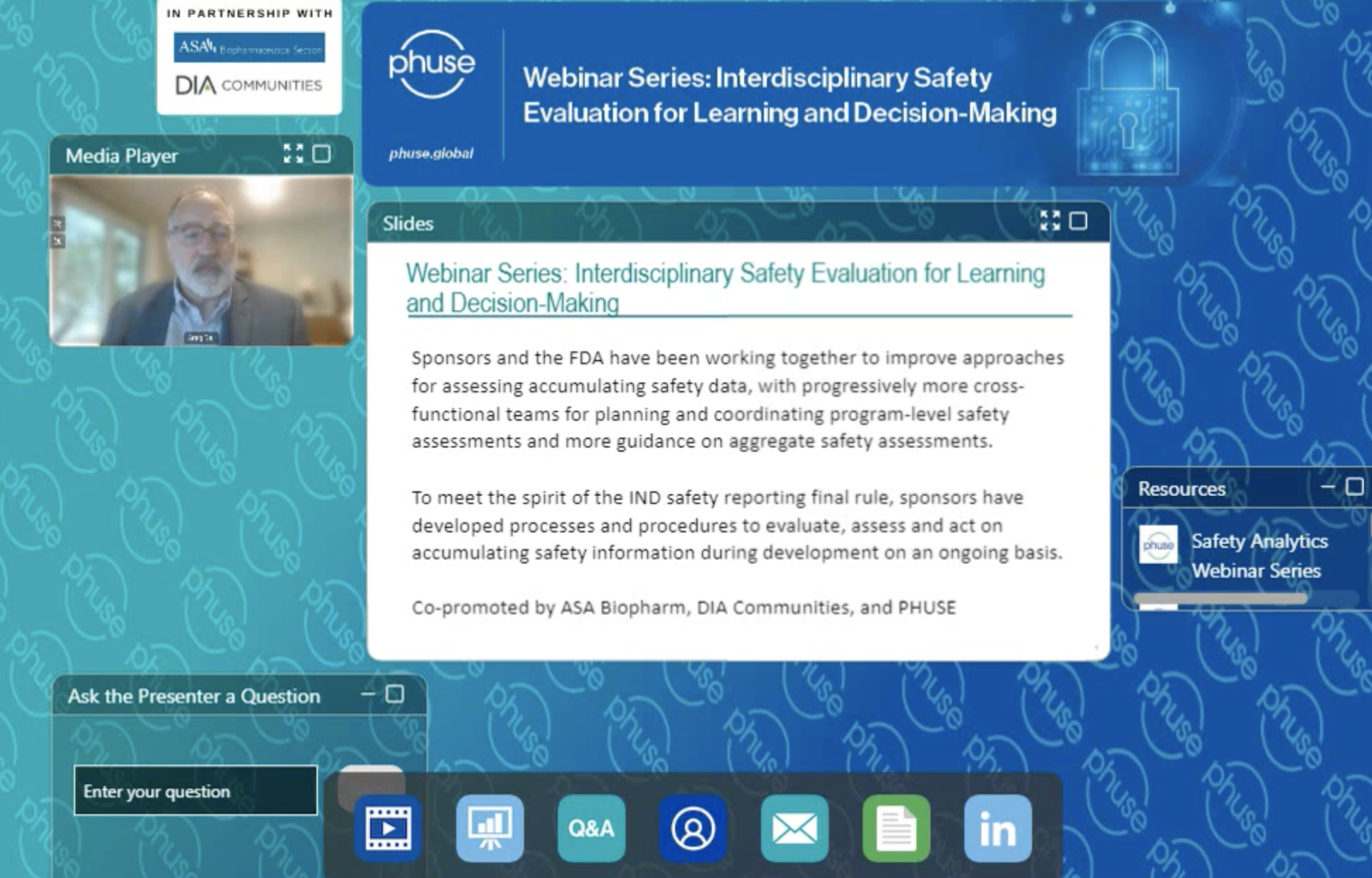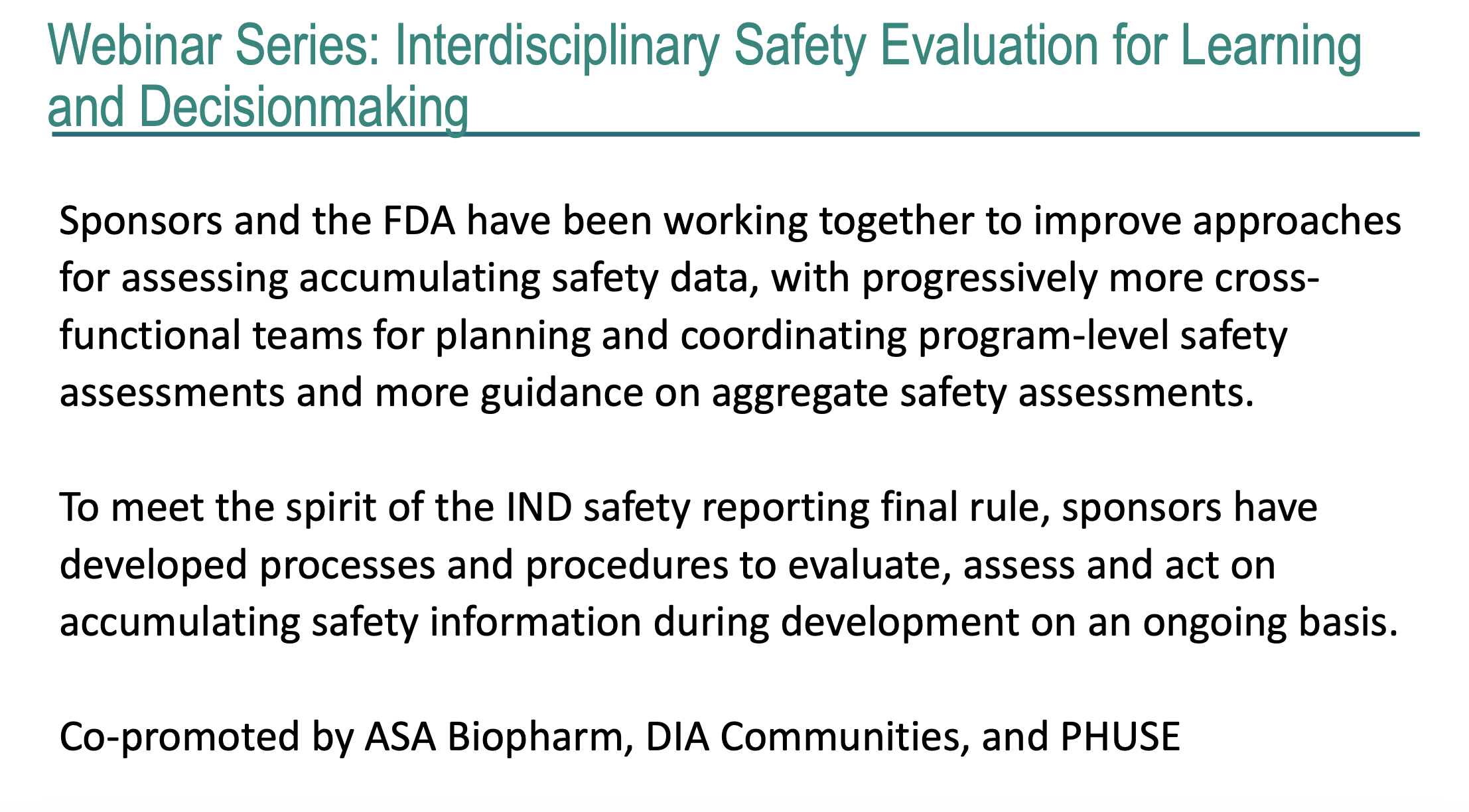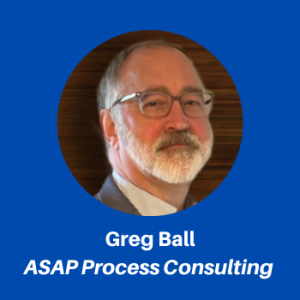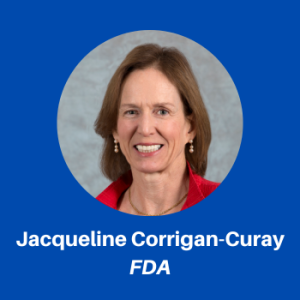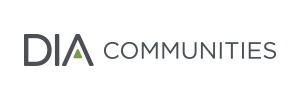Catch up here! |
This Webinar took place 15 June 2023. Catch up by viewing the recording or reading the slides. |
Webinar 1: Scientific Evaluation of Safety Data and Aggregate Safety Assessment Planning for IND Safety Reporting | ||||||||||||||||||||||||||||||||||
|---|---|---|---|---|---|---|---|---|---|---|---|---|---|---|---|---|---|---|---|---|---|---|---|---|---|---|---|---|---|---|---|---|---|---|
Summary: Sponsors and the FDA have been working together to improve approaches to assessing accumulating safety data,with greater emphasis on using cross-functional teams for planning and coordinating programme-level safety assessments and more guidance on aggregate safety assessments. Jacqueline Corrigan-Curay (Principal Deputy Center Director for the FDA’s Center for Drug Evaluation and Research) delivered an insightful presentation on the development and nuances of the IND Safety Reporting Final Rule, including how the FDA have addressed sponsor feedback in the most recent guidance. Sponsors have agreed with the spirit of the final rule from the outset; however, operationalising the guidance has been challenging. To meet the spirit of the IND Safety Reporting Final Rule, sponsors have developed processes and procedures to evaluate, assess and act on accumulating safety information during development on an ongoing basis. Greg Ball (Safety Data Scientist at ASAP Process) explained how an aggregate safety assessment planning process is needed to scientifically evaluate the accumulating programme-level safety information. A proactive and systematic process supports ongoing characterisation of the product safety profile to prepare for regulatory filing activities and for responses to regulatory queries, by consistently and authoritatively communicating the safety story throughout clinical development. Some multidisciplinary teams have been implementing procedures for review of aggregate blinded clinical trial data, thereby minimising the need to intentionally unblind data in ongoing studies. Barbara Hendrickson (former VP of Pharmacovigilance and Patient Safety at AbbVie) and Brian Waterhouse (Clinical Safety Statistician at Merck) provided a very motivating example of how an aggregate safety assessment planning (ASAP) process could leverage the scientific expertise and medical judgement of multidisciplinary safety management teams. They also demonstrated how the ‘trigger method’ could be used to improve the overall quality of safety reporting and to comply with requirements for IND safety reports based on data in the aggregate. Polling questions at the end of the webinar resulted in some illuminating responses from the audience:
The audience also asked the following questions during the webinar:
|
| Presenter | Bio |
|---|---|
Greg Ball, ASAP Process ConsultingGreg Ball served in the Navy and taught High School maths and physics before earning his master’s in statistics from Purdue and his PhD in Biostatistics from the University of Texas. His research on blinded safety monitoring procedures is being developed in collaboration with statistical and clinical scientists at several pharmaceutical companies (including AbbVie and Merck). With Mary Nilsson, Greg co-leads the PHUSE Safety Analytics Working Group. Greg established, with Bill Wang, the ASA Biopharm Safety Monitoring working group and has been pioneering the joint DIA-ASA Interdisciplinary Safety Evaluation (DAISE) scientific working group, to advocate for aggregate safety assessments and cross-disciplinary scientific engagement. | |
Jacqueline Corrigan-Curay, FDAJacqueline Corrigan-Curay, J.D., M.D., is the Principal Deputy Center Director in the FDA’s Center for Drug Evaluation and Research (CDER), where she provides executive leadership on strategic initiatives that advance CDER’s mission to deliver safe, effective and high-quality medications to the American public. Prior to taking on this role, Dr. Corrigan-Curay was the director of CDER’s Office of Medical Policy leading the development, coordination and implementation of medical policy programmes and strategic initiatives, including on real-world evidence, use of technology in drug development and prescription drug promotion. Before joining the FDA, she served as senior medical officer with the Immediate Office of the Director, National Heart, Lung, and Blood Institute (NHLBI) at the National Institutes of Health (NIH). She also served as Director of the Office of Biotechnology Activities (OBA), Office of Science Policy at NIH. Dr. Corrigan-Curay earned her law degree from Harvard Law School, her medical degree from University of Maryland School of Medicine, and a bachelor’s degree in history of science from Harvard/Radcliffe College in Cambridge, MA. | |
Dr Barbara Hendrickson, University of ChicagoDr Barbara Hendrickson is on faculty at the University of Chicago and a former Vice President of Pharmacovigilance and Patient Safety at AbbVie. She is a physician with subspecialty training in paediatrics and infectious diseases and has 19 years of pharmaceutical industry experience. In addition to involvement in multiple new product and supplementary indication submissions, she has led several company safety initiatives. One initiative was a pilot project for ongoing blinded clinical trials, which implemented a process using pre-designated assessment entities to support IND safety reporting decisions based on aggregate safety data. In addition, Dr Hendrickson co-leads the DIA-ASA Aggregate Safety Assessment Planning (ASAP) Working Group, which has published suggested best practices for the ASAP process. | |
Brian Waterhouse, MerckBrian Waterhouse is a senior principal scientist in clinical safety statistics at Merck Research Laboratories. He has more than 20 years of pharmaceutical industry experience analysing clinical trial data across many different therapeutic areas including cardiology, metabolism and endocrinology, dermatology and HIV. His research interests include safety biostatistics and using interactive graphics as investigative and communication tools. He is a co-author of the Bayesian detection of risk using inference on blinded safety (BDRIBS) methodology and the developer of the BDRIBS Shiny app (Safety Signal Exploration using BDRIBS version 2 (shinyapps.io)). Brian is the co-lead of the Benefit Risk Assessment Tool Suite (BRATS) task force within the interdisciplinary work stream of the ASA BIOP Safety Scientific Working Group. |
| In Partnership With | |||
|---|---|---|---|

